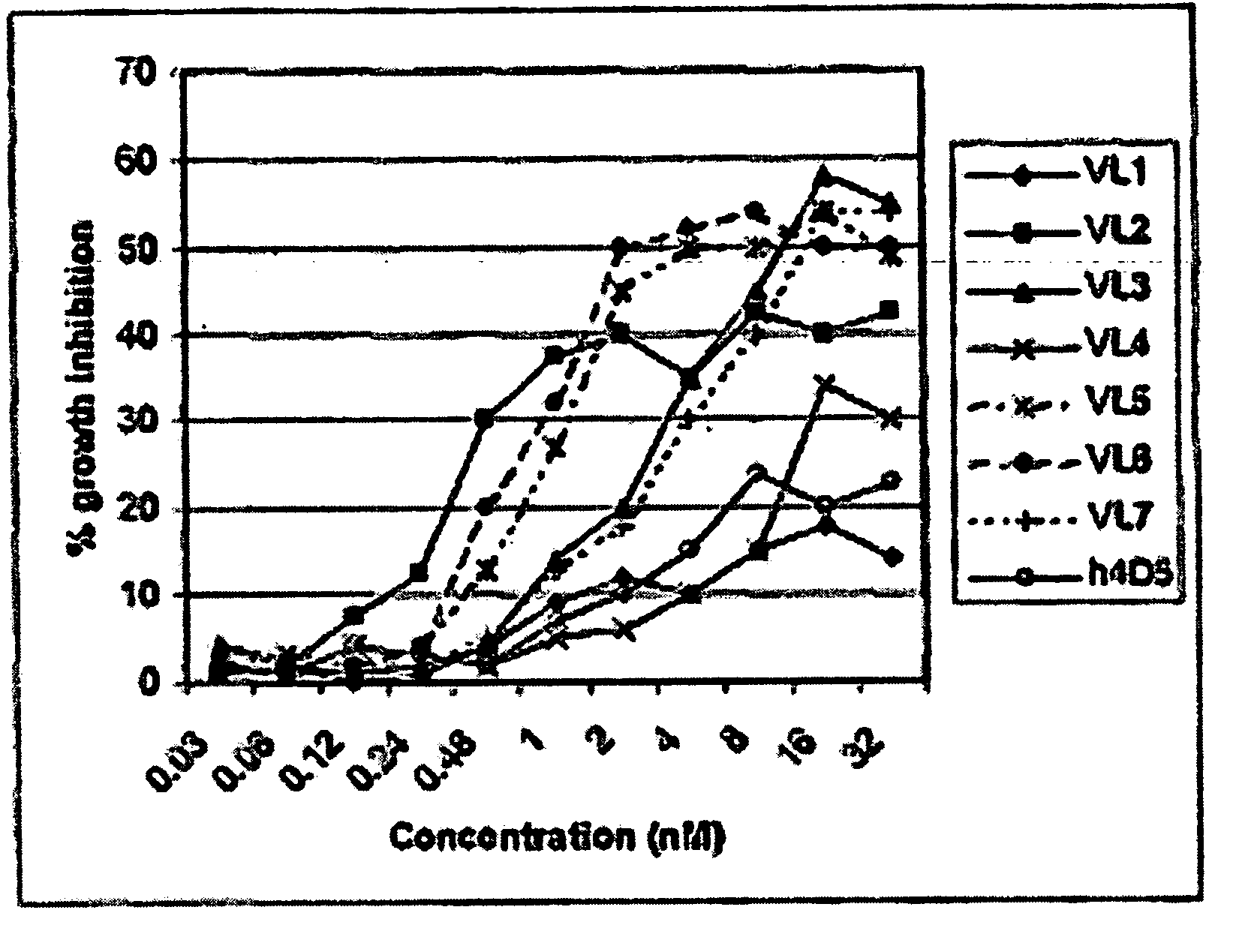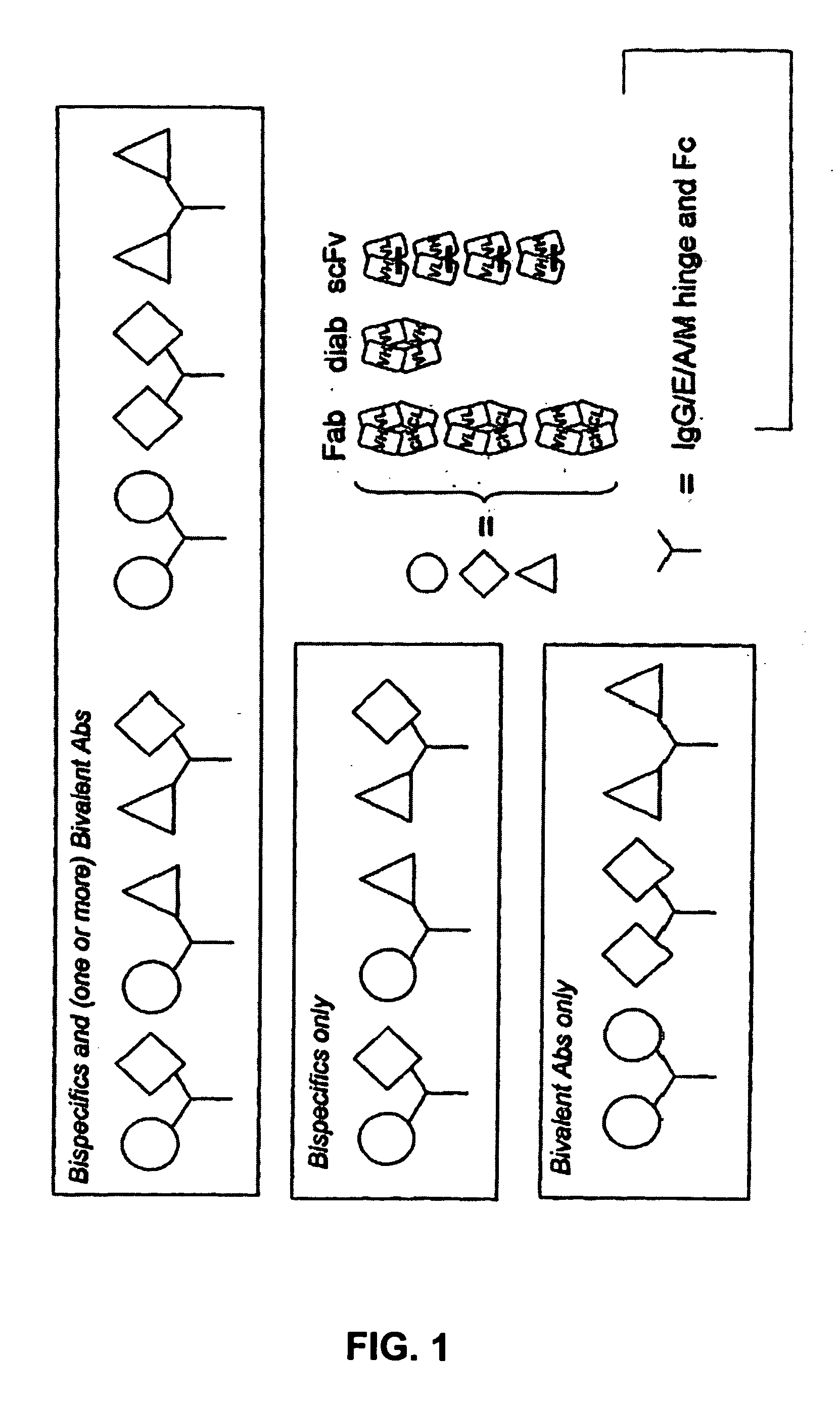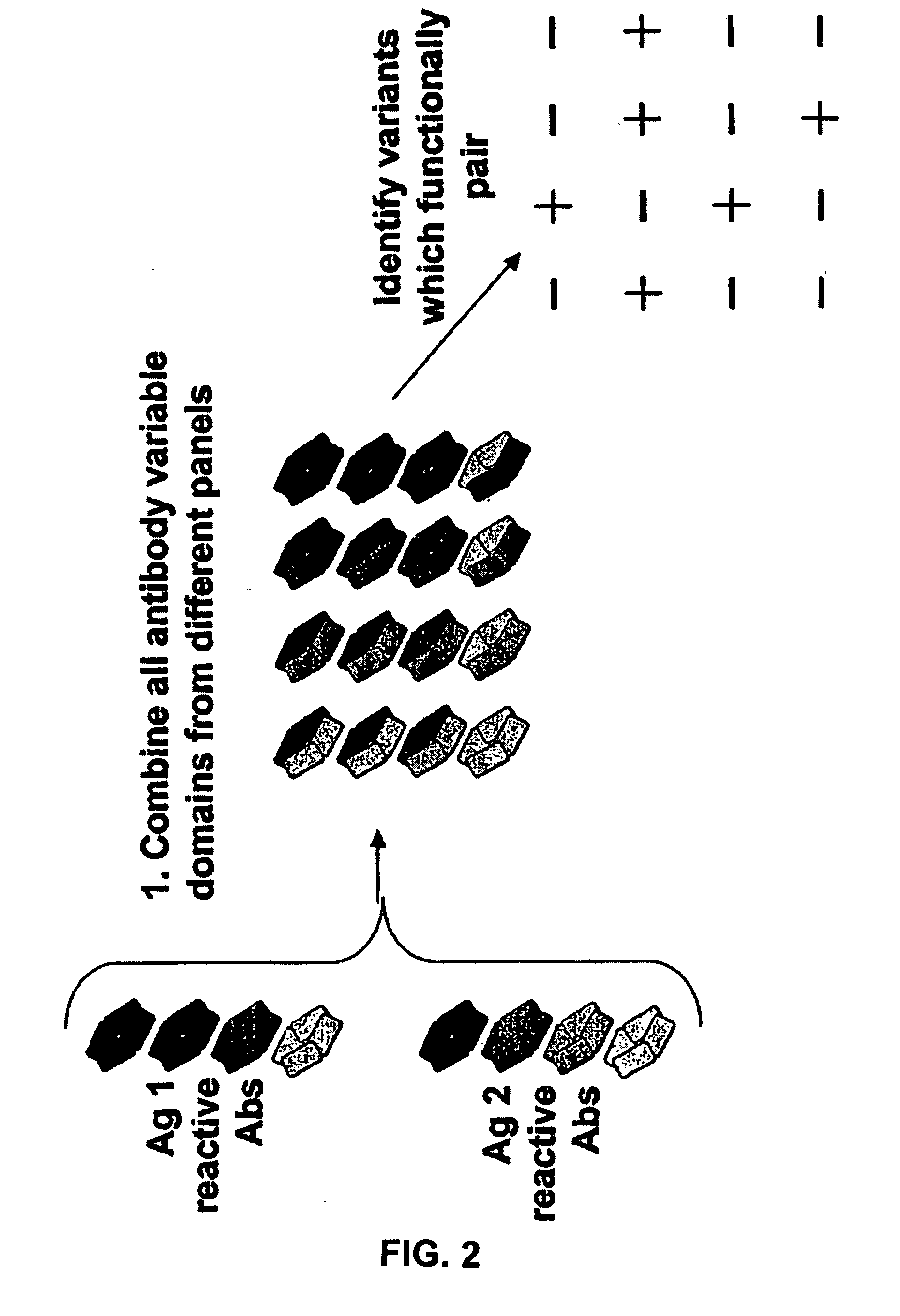Fab library for the preparation of anti VEGF and anti rabies virus fabs
a technology of fab library and vegf, which is applied in the field of molecular biology, can solve the problems of affecting the stability of the other, affecting the development of optimal clinical efficacy and compatibility, and often ineffective monoclonal antibodies for treating a particular disorder, etc., and achieves the effects of high specificity, ease of selection, and high specificity
- Summary
- Abstract
- Description
- Claims
- Application Information
AI Technical Summary
Benefits of technology
Problems solved by technology
Method used
Image
Examples
example 1
Description of the Hybridoma-Derived Anti-Rabies Antibodies used in the Studies
[0147] This example describes a number of rabies-neutralizing antibodies that are used in the further examples. The following antibodies are virus-neutralizing human antibodies: (1) JB1 (abbreviated to JB in the next section), described in Champion et al., J. Immunol. Methods (2000) 235:81-90, and the cloning and sequence in PCT / IS02 / 26584; (2) JA-3.3A5 (abbreviated to JA in the next section), described in Champion et al., J. Immunol. Methods (2000) 235:81-90, the cloning in Morimoto et al. (2001), J. Immunol. Methods 252:199-206 and also in PCT / US01 / 14468; (3) M57, antibody and its cloning were described in Cheung et al. (1992), J. Virol. 66:6714-6720, and further in PCT / IS02 / 26584. The nucleotide sequences of the full heavy and light chain nucleotide sequences and also amino acid sequences of their variable regions are disclosed in the sequence listings (SEQ ID NOS:1-12). On the basis of the data in th...
example 2
Production of Mixtures of scFv Antibody Fragments Based on Recloned Hybridoma-Derived Anti-Rabies Antibodies and Co-Expression
[0148] This example describes the production of a mixture of three binding sites as three proteins. Using as template the variable region genes of the three antibodies described in Example 1, cloning is used to construct three single-chain Fv expression cassettes, one for each of the antibodies, and to clone these in an appropriate expression vector.
[0149] First the variable region genes are amplified with oligonucleotides that hybridize to the 5′ and 3′ ends of the nucleotide sequences and provide appropriate restriction enzyme sites for cloning. Standard cloning techniques are described in Sambrook et al., Molecular cloning, second edition, Cold Spring Harbor Laboratory Press (1987). Cloned variable regions genes are amplified by the polymerase chain reaction using methods well known in the art. For antibody JA, the following procedure is used: primers ar...
example 3
Production of Mixtures of scFv-Fc Antibodies Based on Recloned Hybridoma-Derived Anti-Rabies Antibodies and Co-Expression in a Eukaryotic System
[0152] This example describes the production of a mixture of three or six different proteins composed of variable regions paired to form two or three binding specificities. In a further example, the scFv genes are subcloned into a eukaryotic expression vector based on pCDNA3 which carries the human gamma-1 region. This plasmid, VHExpress, was extensively engineered to remove internal restriction enzyme sites (Persic et al. (1997) 187:9-18), and contains a promoter (CMV instead of EF-1 alpha as in publication), a eukaryotic leader sequence, a polylinker with cloning sites for an antibody variable region, the human gamma-1 gene and the bovine growth hormone poly A site (FIG. 15). Further it contains the genes encoding amp and neo resistance, and the SV40 origin of replication. The full sequence is given in SEQ ID NO:13. This vector is suitabl...
PUM
| Property | Measurement | Unit |
|---|---|---|
| volume | aaaaa | aaaaa |
| total volume | aaaaa | aaaaa |
| volume | aaaaa | aaaaa |
Abstract
Description
Claims
Application Information
 Login to View More
Login to View More - R&D
- Intellectual Property
- Life Sciences
- Materials
- Tech Scout
- Unparalleled Data Quality
- Higher Quality Content
- 60% Fewer Hallucinations
Browse by: Latest US Patents, China's latest patents, Technical Efficacy Thesaurus, Application Domain, Technology Topic, Popular Technical Reports.
© 2025 PatSnap. All rights reserved.Legal|Privacy policy|Modern Slavery Act Transparency Statement|Sitemap|About US| Contact US: help@patsnap.com



